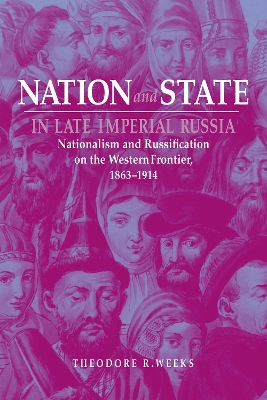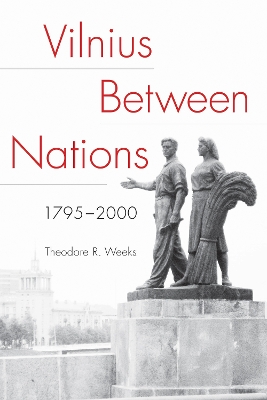NIU Series in Slavic, East European, and Eurasian Studies
3 total works
Before the mid-nineteenth century, Jews in the Polish lands led lives quite separate from their Christian neighbors. As modern ideologies of nationalism gained strength, however, Jewish separateness came to be seen as a problem, even a threat, to the Polish nation. Assimilation, a process by which Jews would become Poles in all but their religious practices, was the solution most often presented by liberal Poles from the late eighteenth century—when the "Jewish question" was first seriously debated in Polish society—until the late nineteenth century. This solution foresaw the cultural, linguistic, and external differences between Catholic Poles and Jews diminishing, thereby allowing Polish-speaking, European-clad Jews to take their appropriate place within the Polish nation.
As Russian cultural and linguistic domination threatened both Polish society and Jews, assimilation was also seen as a means of strengthening the Polish nation. Unfortunately, however, closer relations between Poles and Jews led to increased frictions and even strife between them. In the final decades of the nineteenth century, the solution of assimilation was called into question more and more both by Polish antisemites and by Jewish nationalists. By 1914 the gap between "Polish" and "Jewish" had become so great that many declared it impossible to simultaneously be a "good Jew" and a "good Pole."
Weeks examines how the ideal of assimilation was gradually replaced by more exclusionary and aggressive ideologies, culminating in the early twentieth century in widespread Polish antisemitism. He argues that several long-term factors—economic change, political and cultural repression, the general intensification of national consciousness at the time, and the Revolution of 1905—played a part in the deterioration of Polish-Jewish relations. As the hope for Polish cultural and political autonomy dwindled, Jews became an easy target for Poles.
If one were to pick a single explanation for the fall of the tsarist and Soviet empires, it might well be Russia's inability to achieve a satisfactory relationship with non-Russian nationalities. Perhaps no other region demonstrates imperial Russia's "national dilemma" better than the western provinces and Kingdom of Poland, an extensive area inhabited by a diverse group of nationalities, including Poles, Jews, Ukrainians, Belorussians, Russians, and Lithuanians. Taking an in-depth look at this region during an era of intensifying national feeling, Weeks shows that the Russian government, even at the height of its empire, never came to terms with the question of nationality.
Drawing upon little-known Russian and Polish archives, Weeks challenges widely held assumptions about the "national policy" of late imperial Russia and provides fresh insights into ethnicity in Russia and the former Soviet Union. He demonstrates that, rather than pursuing a plan of "russification," the tsarist government reacted to situations and failed to initiate policy.
In spite of the Russians' great distrust of certain minority nationalities—especially Jews and Poles—the ruling elite was equally uncomfortable with the modern nationalism, even in its Russian form. Weeks demonstrates Russia's unwillingness (or inability) to use nationalistic policies to save the empire by examining its dilatory and contradictory actions regarding efforts to institute reforms in the western lands.
The inhabitants of Vilnius, the present-day capital of Lithuania, have spoken various languages and professed different religions while living together in relative harmony over the years. The city has played a significant role in the history and development of at least three separate cultures-Polish, Lithuanian, and Jewish-and until very recently, no single cultural-linguistic group composed the clear majority of its population.
Vilnius between Nations, 1795-2000 is the first study to undertake a balanced assessment of this particularly diverse city. Theodore Weeks examines Vilnius as a physical entity where people lived, worked, and died; as the object of rhetorical struggles between disparate cultures; and as a space where the state attempted to legitimize a specific version of cultural politics through street names, monuments, and urban planning. In investigating these aspects, Weeks avoids promoting any one national narrative of the history of the city, while acknowledging the importance of national cultures and their opposing myths of the city's identity. The story of Vilnius as a multicultural city and the negotiations that allowed several national groups to inhabit a single urban space can provide lessons that are easily applied to other diverse cities. This study will appeal to scholars of Eastern Europe, urban studies, and multiculturalism, as well as general readers interested in the region.


